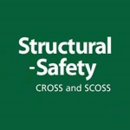Failure of cast iron beams
Many buildings utilising cast iron (CI) continue to give good service with adequate reliability when used in a risk assessed manner and current best practice documents. As is normal with this type of beam, there is rarely any apparent warning of imminent collapse.
Certain combinations of actions may lead to an unsafe situation that should be investigated by a competent structural engineer. These situations include:
- Additional loading on a CI beam, typically arising from further deadweight added since original completion. The unregulated increase of load on a structure should always be a matter of concern.
- Long-standing ingress of water leading to corrosion, deterioration of the concrete infill, and loss of any composite action. Extended basements or roof garden arrangements are particularly prone to this action.
- The beams working at high levels of stress as originally installed. This is more likely in a domestic structure where the beam may have been sized by rule of thumb.
Professionals working in this field, or with clients responsible for property of this type and era, should be aware of these issues and be ready to advise the relevant parties of the need for a structural risk assessment if the identified conditions exist.
[edit] Related articles on Designing Buildings Wiki
- Brittle fracture.
- Cast iron.
- Conservation of Architectural Ironwork.
- Defects in construction.
- Degradation of construction materials.
- Failure of metals.
- Flat roof defects.
- Girder.
- Graphitisation.
- Iron.
- Metal.
- Roofing defects.
- Rust.
- Structural failures.
- Structural steelwork.
- Tension.
- Weathering steel.
Featured articles and news
Latest Build UK Building Safety Regime explainer published
Key elements in one short, now updated document.
UKGBC launch the UK Climate Resilience Roadmap
First guidance of its kind on direct climate impacts for the built environment and how it can adapt.
CLC Health, Safety and Wellbeing Strategy 2025
Launched by the Minister for Industry to look at fatalities on site, improving mental health and other issues.
One of the most impressive Victorian architects. Book review.
Common Assessment Standard now with building safety
New CAS update now includes mandatory building safety questions.
RTPI leader to become new CIOB Chief Executive Officer
Dr Victoria Hills MRTPI, FICE to take over after Caroline Gumble’s departure.
Social and affordable housing, a long term plan for delivery
The “Delivering a Decade of Renewal for Social and Affordable Housing” strategy sets out future path.
A change to adoptive architecture
Effects of global weather warming on architectural detailing, material choice and human interaction.
The proposed publicly owned and backed subsidiary of Homes England, to facilitate new homes.
How big is the problem and what can we do to mitigate the effects?
Overheating guidance and tools for building designers
A number of cool guides to help with the heat.
The UK's Modern Industrial Strategy: A 10 year plan
Previous consultation criticism, current key elements and general support with some persisting reservations.
Building Safety Regulator reforms
New roles, new staff and a new fast track service pave the way for a single construction regulator.
Architectural Technologist CPDs and Communications
CIAT CPD… and how you can do it!
Cooling centres and cool spaces
Managing extreme heat in cities by directing the public to places for heat stress relief and water sources.
Winter gardens: A brief history and warm variations
Extending the season with glass in different forms and terms.
Restoring Great Yarmouth's Winter Gardens
Transforming one of the least sustainable constructions imaginable.























